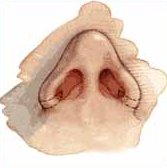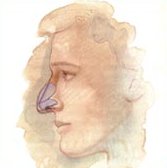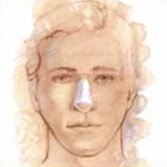Rhinoplasty (Nasal reshaping)
Plastic surgeons usually recommend that patients wait until they are at least 14 or 15, and possibly older for boys, before undergoing rhinoplasty. This is because the nose may not be fully developed at a younger age. If you are a teen, your plastic surgeon will want to be certain that you have thought carefully about surgery and that the desire to change your appearance is based on your own feelings rather than those of your parents or friends.
Assuming you are in good health, there is no upper age limit for having your nose reshaped. Rhinoplasty is sometimes performed in conjunction with a facelift or other rejuvenation surgery to correct aging changes of the nose such as a drooping tip.
Occasionally certain breathing problems related to the internal nasal structures can be corrected at the same time as nose reshaping is performed (This is not usually the case). Your plastic surgeon will be able to help you determine whether these structures should be modified along with reshaping your nose.


Am I a good candidate for rhinoplasty?
Some of the indications that you may be a good candidate for rhinoplasty are:
- Your nose appears too large for your face
- There is a bump on the nasal bridge when viewed in profile
- Your nose seems too wide when viewed from the front
- The nasal tip droops or plunges
- The tip is thickened or enlarged
- Your nostrils are excessively flared
- Your nose is off-centre or crooked
- Previous injury has made your nose asymmetrical
It is important that you have a clear idea of how you would like your nose to look and, at the same time, realize that there are limitations to the procedure. Patients with sufficient physical and emotional maturity who undergo rhinoplasty because they want to enhance their self-image are usually very satisfied with their decision.
Your Personal Consultation
During the initial consultation, you may be asked to look in a mirror and point out exactly what you would like to see improved. This will help your plastic surgeon to understand your expectations and determine whether they can realistically be achieved.
How will I be evaluated for rhinoplasty?
You should come to the consultation prepared to discuss your medical history. This will include information about any medical conditions you may have, medical treatments you have received, previous surgeries including repair of nasal injuries, and medications that you currently take. Your plastic surgeon may also ask whether you have difficulty breathing through your nose, suffer from allergies that may cause nasal stuffiness, or are a chronic user of nasal spray. It is important for you to provide complete information.
In evaluating you for rhinoplasty, your plastic surgeon will conduct a routine and painless examination of your internal nasal structures. Your skin quality as well as the size and shape of your nose and its relationship to your other facial features will be carefully studied. In some instances, your plastic surgeon may recommend surgery of your chin, making it either more or less prominent, to improve facial balance. This procedure can be done at the same as your rhinoplasty.
How is Rhinoplasty performed?
Because of individual factors, not everyone will achieve the same results from rhinoplasty. Your surgeon's goal is to obtain the best possible results for you.
Where are the rhinoplasty incisions placed?
Alterations may be made:
- To increase or decrease the nasal bridge
- Reduce the size or width of the nose
- Narrow the nostrils
- Change the angle between the nose and upper lip
- Reshape the tip
The surgical techniques employed will depend primarily on the goals established by you and your plastic surgeon. In many instances, all of the incisions will be placed inside your nose, where they will not be visible.
If the base of the nose is narrowed or the nostrils reduced, small wedges of skin at the base of the nostrils will be removed. Incisions are hidden in the natural crease where the nostril joins the cheek.
Sometimes a very short incision is made across the vertical strip of tissue that separates the nostrils, called the columella. This technique is called an "open rhinoplasty." Whatever incisions are used to reshape your nose, they will ultimately be very inconspicuous.

Small wedges of skin, as shown, are removed to narrow the base of the nose or reduce the width of the nostrils.

Incisions are placed inside the nose to provide access to the cartilage (blue shaded area) and brown (light brown shaded area) that form the nasal framework

Depending on the surgical technique used, a splint may be placed on the bridge of the nose for the purpose of holding the tissues in place until they have stabilized.
How is my plastic surgeon able to reshape my nose?
Through the small incisions described previously, work is done on the cartilage and bone that form the framework of your nose.
Sometimes, the position of certain bones may need to be altered slightly in order to make your nose look narrower and straighter. If your nose needs to be built up in some areas, this can be done using nasal cartilage, or perhaps bone or cartilage from another site. The skin and soft tissues then redrape themselves over this new "scaffolding."
Potential complications
Some of the potential complications are:
- Haematoma (an accumulation of blood under the skin that may require removal)
- Infection
- Asymmetry between the two halves
- Over or under reduction
- Temporary loss of smell
- Temporary skin numbness
- Adverse reactions to anaesthesia
- Numbness of the skin
- Palpable bony ridge
- Unsatisfactory result
- Occasionally, if the surgical outcome needs further improvement, additional surgery may be necessary.
Occasionally, if the surgical outcome needs further improvement, additional surgery may be necessary.
You can help minimize certain risks by following the advice and instructions of your plastic surgeon, both before and after your surgery.
How should I prepare for surgery?
If you are a smoker, you will be asked to stop smoking well in advance of surgery. Aspirin and certain anti-inflammatory drugs can cause increased bleeding, so you should avoid taking these medications for a period of time before surgery. Your surgeon will provide you with additional preoperative instructions.
What will the day of surgery be like?
Your rhinoplasty will be performed in a hospital. Medications are administered for your comfort during the surgical procedure. Frequently a combination of local anaesthesia and intravenous sedation may be used although general anaesthesia is usually desirable in most instances. For your safety during the operation, various monitors are used to check your heart, blood pressure, pulse and the amount of oxygen circulating in your blood.
When surgery is completed, you will be taken into a recovery area where you will continue to be closely monitored. There may be some discomfort, but this can be controlled by medication, which you may continue taking at home. Depending on the surgical technique used, a splint may have been placed on the bridge of your nose for the purpose of holding the tissues in place until they have stabilized. The splint will protect your nose while you sleep and shield it from accidental bumps. Frequently, you may also have a small triangular bandage beneath the tip of your nose. Packing or soft internal splints are sometimes used inside the nostrils, especially if work has been done to improve your breathing.
You probably will be permitted to go home the day after the operation after any intranasal packs have been removed.
How will I look initially?
It is important to realize that the amount of time it takes for recovery varies greatly among individuals.
The first couple of days after surgery, you should restrict your activities and sleep with your head elevated. This will help to minimize swelling and reduce the possibility of minor bleeding, which is not uncommon. Remember, you must not take aspirin or certain anti-inflammatory medications.
Generally, bruising around the eyes and cheeks is most apparent during the first three days following surgery. Most discoloration will disappear within a week. A few days after surgery, you can begin to use makeup as a concealer, if desired. Noticeable swelling may last for several weeks. Minor residual swelling, most frequently affecting the nasal tip, may continue for many months, but generally this should not be apparent to others. You may need to continue wearing the nasal splint for up to a week, during which time you should avoid getting it wet.
When can I resume my normal activities?
Straining, bending and lifting should be avoided during the early postoperative period. In many instances, you may be able to return to work within a week or ten days after surgery. Most normal activities including exercise can usually be resumed within three weeks.
It will be a few months before you can expose your reshaped nose to direct sunlight. Your nose will be sensitive during this time, and you must be conscientious about using a sunblock to protect your skin. If the bones of your nose were altered, it may be a number of weeks before you can wear glasses without special support such as tape.
Results of Your Rhinoplasty:
The goal of rhinoplasty is a nose that looks natural and blends harmoniously with your other facial features.
Since the healing process is gradual, you should expect to wait up to one year to see the final results of your rhinoplasty. You are likely, however, to begin enjoying your new look within weeks of your surgery.
How long will the results last?
In most instances, the results of rhinoplasty are permanent, except for possible changes associated with the normal aging process.